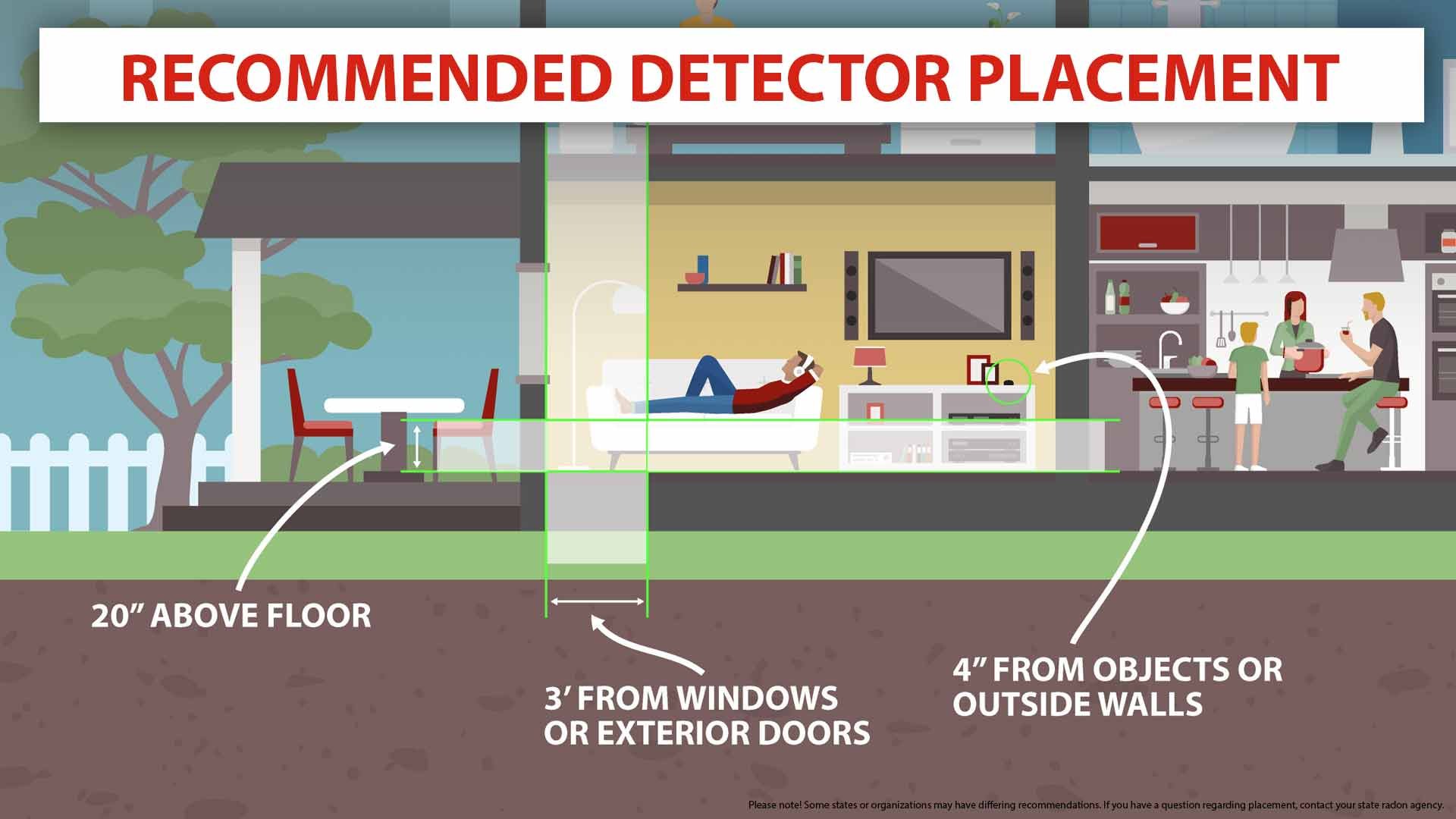DIY Testing
Deploying a radon testing device in your home is an important step in protecting your health and the health of your family. Here are some tips on how to do it:
Choose a radon-testing device
There are two main types of radon testing devices: short-term and long-term. Short-term testing devices are designed to be deployed for a few days to a few weeks and are often used for initial testing or to confirm the need for long-term testing. Mitigation should never be considered based only on a short-term test. Long-term testing devices are designed to be deployed for several months to a year and provide a more accurate picture of radon levels in your home. You can purchase radon-testing devices on our products page.
Determine where to deploy the device
Radon testing devices should be placed in the lowest level of your home that is frequently used, such as a basement or a living room. They should be placed at least 20 inches above the floor and away from windows, doors, and drafts. See the photo below to help with the placement. Most devices also include manufacturer’s recommendations on where to place the device.
Deploy the device
Follow the instructions that come with your radon testing device to deploy it in your home. For short-term testing devices, this may involve opening the device and placing it in the designated location for a specified period of time. For long-term testing devices, this may involve hanging the device in the designated location and leaving it there for several months. Make sure to deploy the device according to the manufacturer's instructions and avoid moving or disturbing it during the testing period.
Send the device for analysis
Once the testing period is over, follow the instructions that come with your radon testing device to send it for analysis. This may involve mailing the device to a laboratory or dropping it off at a designated location. The laboratory will analyze the device and provide you with a report of the radon levels in your home. If you’ve purchased a continuous monitor it typically connects with your phone and will display your reports on your phone.
Take action if necessary
If the radon levels in your home are above the recommended action level (which varies by country and region), it's important to take action to reduce your exposure to radon. This may involve installing a radon mitigation system in your home, which can help remove radon from the air and reduce your risk of developing lung cancer.
Deploying a radon testing device in your home is an important step in protecting your health and the health of your family. By following these steps, you can accurately measure the radon levels in your home and take action if necessary to reduce your exposure to this dangerous gas.

